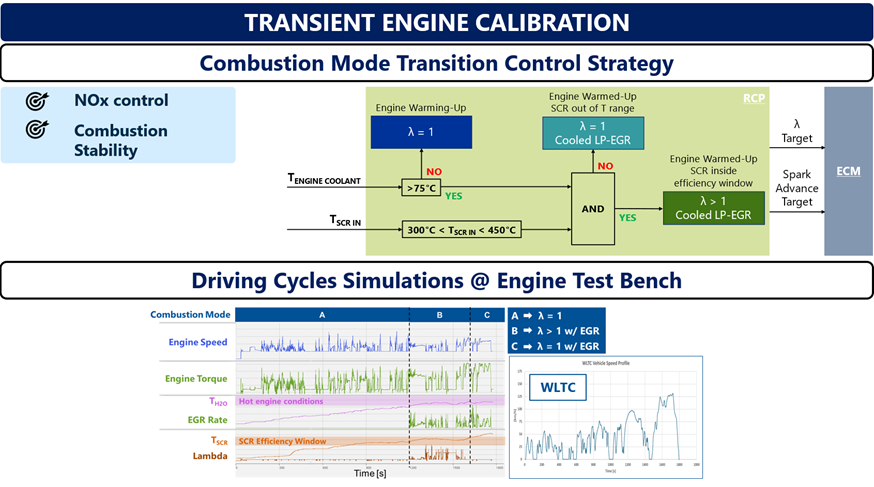A control strategy for the transitions among different combustion modes has been developed and tested at Politecnico di Torino facilities. The logic is based on two temperatures, the engine coolant temperature measured downstream the engine thermostat, and the inlet SCR (Selective Catalytic Reduction) temperature measured upstream the SCR device.
The performance of different cycles including Worldwide harmonized Light Vehicles Test Procedures (WLTC) and Real Driving Emissions (RDE) were evaluated with the Engine #2 on the test bench. Several tests were carried out to refine the calibration of the prototype actuator controls of Variable Geometry Turbocharger E-Turbo, Exhaust Gas Recirculation loop and SCR urea injection system as well as to stabilize the engine behavior in terms of knocking phenomena and lambda control.
The full functionality of the engine controls has been thus demonstrated over the target driving cycles identified for the final performance assessment on the demonstrator vehicle.
While the test bench results have confirmed the full functionality of the engine controls, it’s important to note that these outcomes are not yet fully representative of the final vehicle configuration. This is primarily due to differences in the engine cooling system layout between the test bench and the final vehicle configuration.


